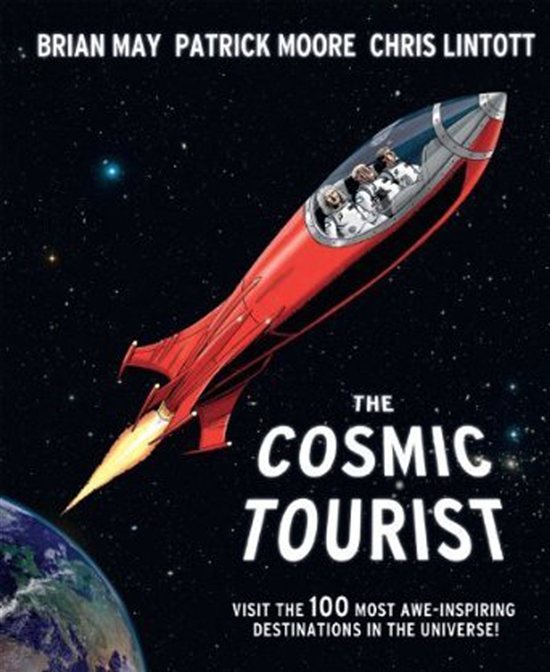 Every astronomy enthusiast knows Brian May — Queen’s legendary guitarist and a PhD. astronomer who studied dust in the plane of the solar system. Brian has recently published a second popular astronomy book, The Cosmic Tourist: Visit the 100 Most Awe-Inspiring Destinations in the Universe! (192 pp., hardcover, Carlton Books, London, 2012, $39.95; ISBN 978–1–84732–619–5). The book is distributed in the United States by Sterling Publishing Co.
Every astronomy enthusiast knows Brian May — Queen’s legendary guitarist and a PhD. astronomer who studied dust in the plane of the solar system. Brian has recently published a second popular astronomy book, The Cosmic Tourist: Visit the 100 Most Awe-Inspiring Destinations in the Universe! (192 pp., hardcover, Carlton Books, London, 2012, $39.95; ISBN 978–1–84732–619–5). The book is distributed in the United States by Sterling Publishing Co.
Brian co-wrote the book with the same partners he had with his previous popular work, Bang! — astronomer Chris Lintott and the late, great Patrick Moore. Lintott is a researcher in the physics department at the University of Oxford, where he is well-known for the Galaxy Zoo project. Moore, who died last year, was, of course, an icon in the astronomy world and an inspiration to many thousands through his long-running The Sky at Night program on the BBC.
This work is a lavish, beautifully illustrated book filled with great photography showing the authors’ 100 favorite places in the cosmos. As such, it’s a great browsing book, revealing many favorites of planetary and deep-sky observers alike, from lunar features to solar flares to asteroids to nebulae and exotic galaxies. The book is arranged to follow the cosmic distance scale, jumping from Earth out to the cosmic microwave background radiation, with most of the objects lying relatively nearby, a few hundred to a few thousand light-years distant.
This is not merely a picture book, however, as each “destination” receives several hundred words of incisive, interpretive text. Readers learn about the differences in the rings of Saturn with sexy multicolor Cassini imagery; of Sedna and the meaning of the Kuiper Belt with a Hubble Sace Telescope composite; and of the Ring Nebula’s structure as accompanied by a stunning full-page Hubble shot.
The authors chose favorite objects among them and employed the device of using a spaceship of the imagination — Ptolemy, named after Moore’s cat — for their interstellar travel. (And this provides a fine illustration for the book’s cover.) The work presents spritely, fast-paced narrative writing, an excellent choice of many obvious and many off-track and somewhat obscure objects, and a visual feast for anyone who loves to appreciate the beauty of the universe. This is a book you can treasure on two different levels, and that is a rarity even in the well-covered world of the cosmos.
I recommend this book for all amateur astronomers, regardless of their level. It will be greatly enjoyed by one and all.